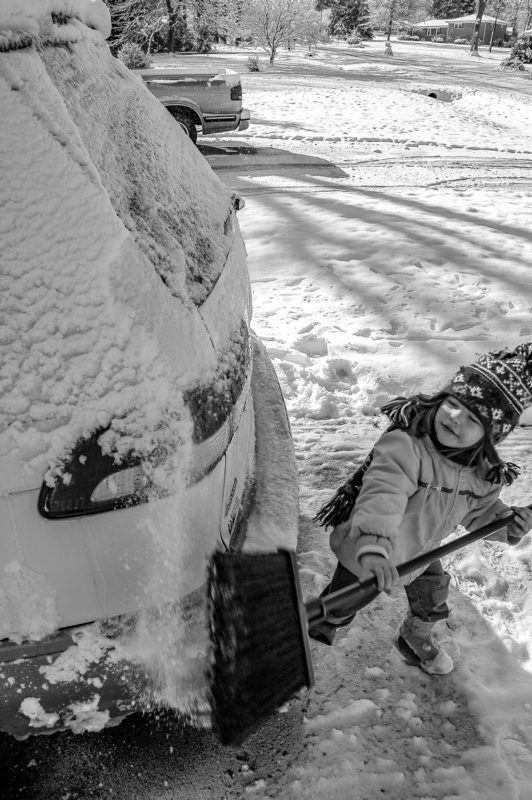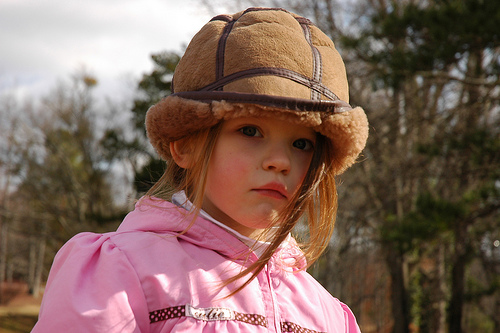Almost all children adore animals. Kids are attracted to the novel, and what could be more novel than another living creature?
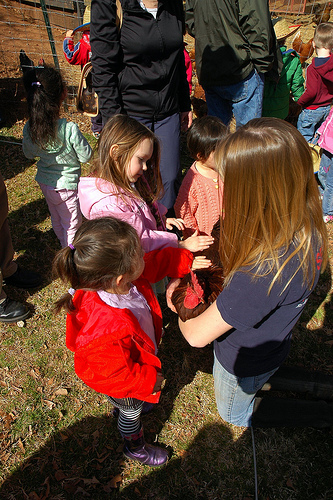
L’s love of animals borders on obsessive, and like many obsessions, hers leads to behaviors that seem counterproductive: she loves are cat almost literally to death (at least that’s certainly the cat’s point of view). And so a visit to a farm is simply perfect for L: she gets to experience animals up close, yet the familiarity that leads L to take so many liberties with our cat is missing.
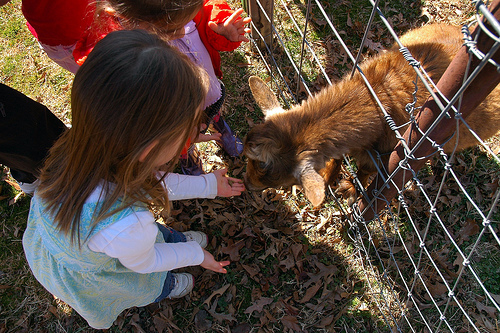
Over the weekend, we went to a birthday party held at a local stable and farm — brilliant idea. We petted chickens and fed goats.
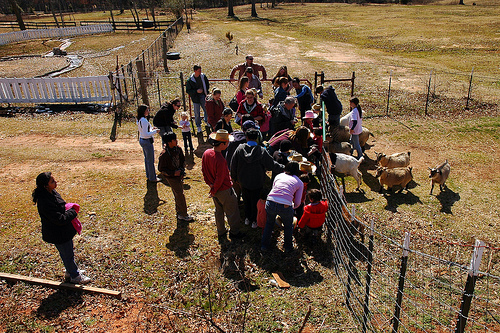
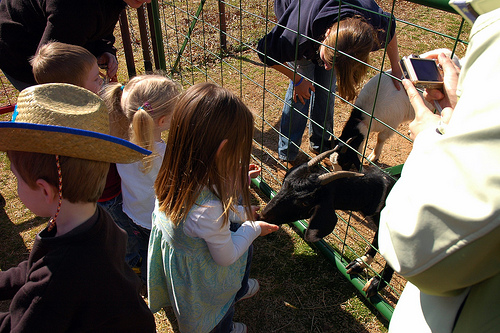
The highlight, of course, was in the barn.
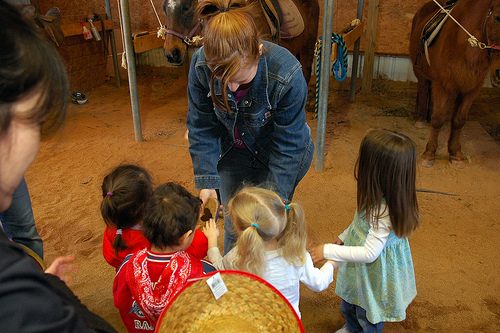
Like all good riders, the children got a chance to do a little horse grooming, learning how to brush the horses with the various brushes then applying their new knowledge.
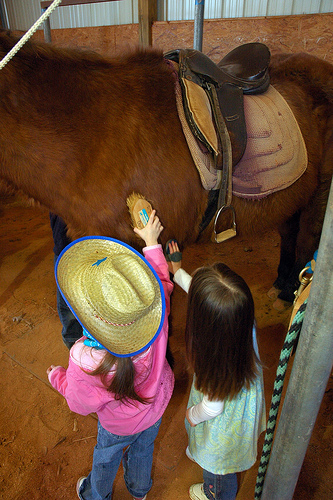
L is a curious mix of excitement and conscientiousness. She was eager to try the various brushes and wanted to use them correctly, but she never really took the time to try to remember — to allow others to remind her — how to the various brushes.
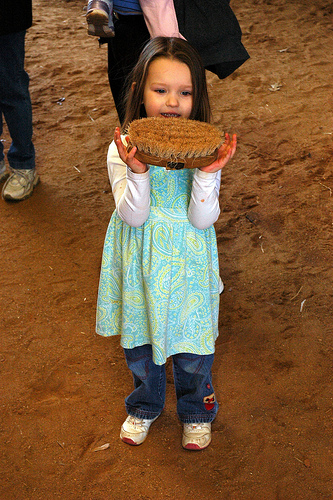
She’s a little like me, I guess: she dives in, fairly confident that she’ll get it right soon enough that any mistakes made along the way won’t be significantly problematic.
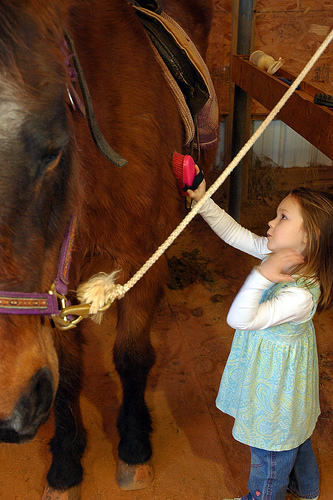
Fortunately, the conscientious side of her took control when she was on the horse. She listened carefully and didn’t deviate from instructions even slightly.
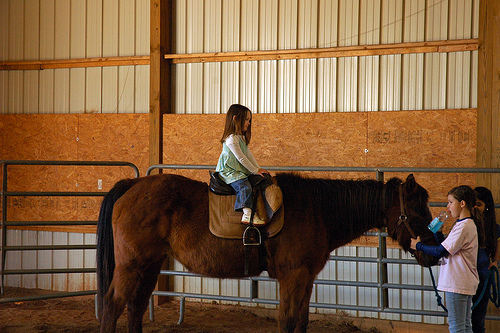
Once it was all over, the swings outside the barn beckoned. L had had fun the entire day, but she seem a little relieved to be doing something she knew how to do. Novel is good, in small doses.






